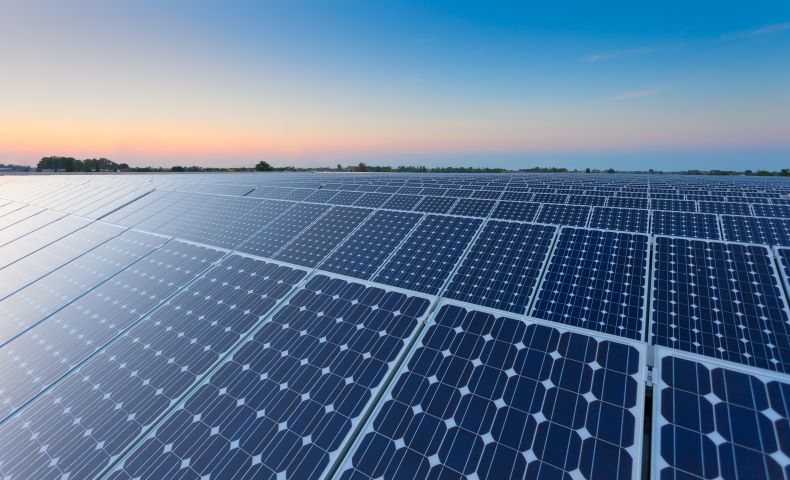
A solar panels efficiency is something that with technology is constantly improving and with innovations in solar cell construction, materials and the design are the reasons for the improvements. The multi-junction are a technology that could possible provide increased efficiencies for solar panels in the future.
What are multi-junction solar cells?
These multi-junction solar cells are very capable of absorbing different wavelengths of the incoming sunlight by using different layers, which makes the conversion process from sunlight to electricity more efficiently than a single-junction solar cell. These solar panels have the potential to be a lot more efficient than a traditional solar cell, but the costs of production is very high.
These solar cells are a sort of tandem solar cell, which means that they are made up of stacked materials and they are optimized to absorb all sorts of frequencies of sunlight.
How do these cells work?
The solar cells are made of a semiconductor material, typically silicon in crystalline solar cells. A solar cell has two different layers, an n-type with a high concentration of electrons and a p-type with relatively low concentrations of electrons.
When the sunlight hits the n-type layer, the electrons flow from the section to the second and create an electrical current that can be captured and used for power. This kind of solar cell is known as a single-junction solar cell, it has one single boundary/junction between the n-type and p-type layers, this is known as a p-n junction. These p-n junctions are where the electrical currents flow in solar cells.
The multi-junction solar cell is a tandem solar cell that more than one p-n junction. This means that there are multiple layers of different semiconductor materials, each p-n junction produces electric currents in response to different wavelengths of lights. Which means that in theory, multi-junction solar cells are capable of converting more sunlight hitting them to electricity when they are compared to single-junction cells.
Multi-junction solar cells, like normal silicon solar cells, they produce electricity through the photovoltaic effect.
The Photovoltaic effect
The photovoltaic solar cells absorb the sunlight and generate flowing electricity through the photovoltaic effect. Depending on the type of solar technology that is used. But the three steps are common for all photovoltaic cells.
The Light is absorbed and knocks the electrons loose.
The light hits the photovoltaic cells and it is then absorbed by the semiconducting material that is typically made from silicon. The light energy causes the electrons that are in the silicon to be knocked loose, that is what will eventually becomes the solar electricity that is used in your house.
The loose electrons flow, which creates a current
In photovoltaic cells there are two layers of silicon that is used. Each layer is treated special, or ‘doped’, in order to create an electric field. When you hear the word ‘doped’ it means that one side has a net positive charge and the other side has a negative charge. This positive/negative charge causes the loose electrons to flow in one direction through the solar cells, which generates an electrical current.
The current us then captured and transferred to the wires
One the electrical current is generated by the loose electrons, the metal plates on each side of the solar cell, collects those electrons and then transfer them to wires. By this step, the electrons are flowing as electricity through the wiring to a solar inverter, which then converts the direct current (DC) energy that is created by the solar panels, to alternating current (AC) energy that is used to power your home, once that process is done the electricity is then sent to power your home.
Multi-junction cell structure
Unlike other solar cells, multi-junction solar cells aren’t made using silicon as semiconductor. But they are made up of materials like gallium indium phosphide (GalnP), indium gallium arsenide (InGaAs), and germanium (Ge) are all used to create separate layers of semiconductors that all respond to different wavelengths of the sunlight.
Compare multi-junction and single-junction solar cells
How do multi-junction cells and single-junction cells compare? There are three main factors to look at, the efficiency, materials and pricing.
The Efficiency
A solar cell’s efficiency is measured by the percentage of incoming light that hits the solar cells and can be converted to the electricity. Theoretically, the efficiency if a multi-junction solar cells are able to potentially outperform traditional single-junction cells.
In theory the multi-junction solar cells are expected to have efficiency that tops 45 percent. The efficiency of single-junction cells that top out at about 33.5 percent. By adding more junctions (up to around 5 or 6) you could boost the efficiency over 70 percent.
The materials
A single-junction solar cell is typically made while using silicon as a semiconductor, the multi-junction solar cells that are commonly used three seoarate semiconductors, gallium indium phosphide (GalnP), indium gallium arsenide (InGaAs) and germanium (Ge).
The Pricing
Multi-junction solar cell production is more complicated and difficult process that uses more expensive materials, making the costs a little higher than the standard single-junction cells.


Input your address to see if it is solar friendly and how much you can save with solar.
Great. Your address is perfect for solar. Solar incentive is still available. Select monthly utility cost and calculate the size of solar system you will need now.
| kw System size | years Payback period | Lifetime savings |
No money down, 100% finance is available.
|
|
Make the Most of the Sun this Summer and Go Solar |
Comments